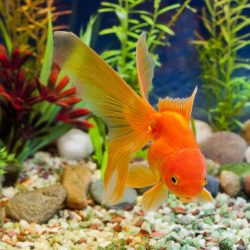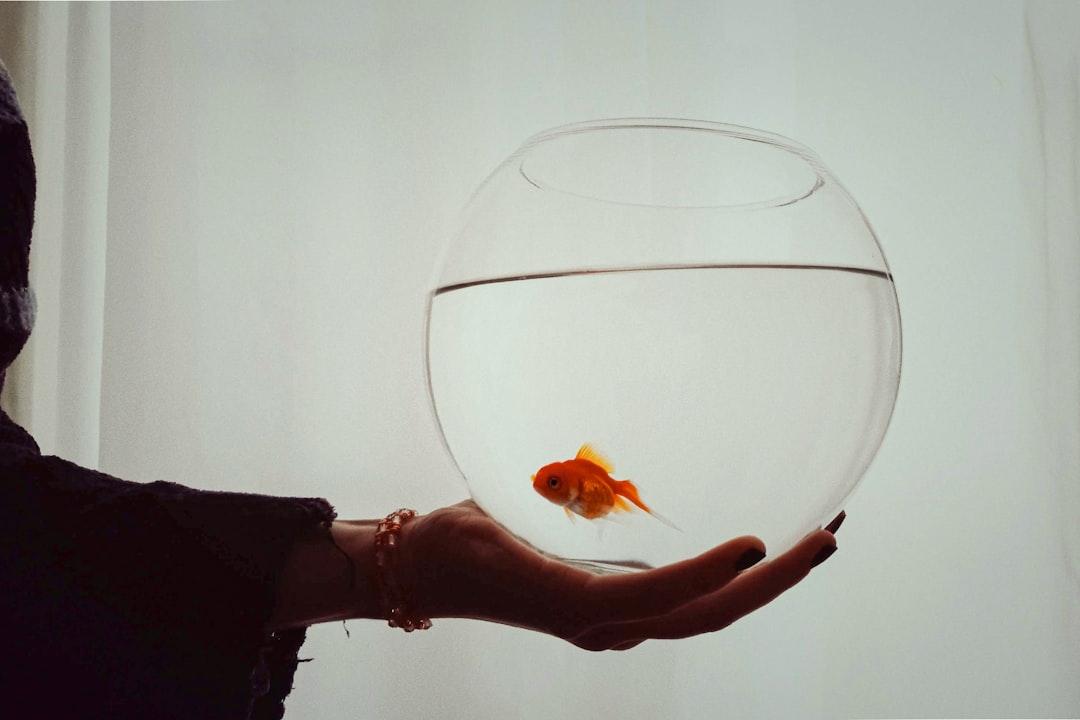Goldfish are one of the most popular choices among fishkeepers, and why wouldn’t they be? They are attractive and unique. At the same time, they are a bit sensitive to any change. So if you want to add new goldfish to your aquarium, acclimation is the best way to welcome them.
It is such a nice feeling when one is purchasing new fish to add to an aquarium. But in some cases, fish may die shortly after being brought into their new home.
People often assume that they arrived in bad health from the pet store. In fact, they could have died because their new owner didn’t correctly acclimate the fish into their home aquarium.
When acclimating goldfish, people usually float the bag into the aquarium to equalize the temperatures and then drop both the water and the fish in the water. It is a common way of acclimating new fish, which some people think is sufficient.
Though your goldfish may survive this, adding them directly to your tank is a bad idea. They might bring parasites and diseases from the pet store that contaminate the tank water.
Therefore all new fish should be in quarantine for approximately two weeks before being added to your tank.
If you do not have a quarantine tank, it is essential to get one. Using a quarantine tank is the ideal method to acclimate new fish. Additionally, it gives you a place to put aggressive and injured fish when they need to be removed from the display aquarium.
Be observant when purchasing your new goldfish. If you see dead or sick fish in any of the tanks, avoid buying fish from them. Then be sure to quarantine all newly bought fish first to protect the fish you have at home.
The importance of acclimating goldfish
Generally, acclimatization is an essential part of introducing fish into a new container. Whether it’s a new fish or you are just shifting them from one box to another.
Spending some time acclimating your fish will save you the agony of watching them die.
The following are some of the benefits of acclimating goldfish:
- It helps your goldfish adjust to the temperature.
Goldfish thrives well in temperatures ranging between 65 and 72 degrees Fahrenheit. Acclimatizing goldfish involves sitting the bag in the quarantine tank for about fifteen minutes to ensure the water in the bag and tank is within the temperature range for goldfish to survive. Putting the fish in either warmer or cooler water suddenly may shock your fish, thus stressing it.
- It helps them reduce stress.
Many people assume that their already established healthy aquarium cannot stress a new fish. But this is not the case. Some fish may be shocked by their new environment. In this case, acclimatization is necessary to make them adapt and not live in fear of their new environment.
Similarly, fish that have been shipped by mail are stressed because they are usually enclosed in the bag for at least a day. Ammonia levels begin rising when the fish is put in the bag; therefore, as time goes by, the pH of the water drops, adding more stress to your fish.
- It helps the fish adjust to some chemical properties of the water, like PH.
Temperature is not the only variable that goldfish need to adapt to. You should consider other chemical properties, including PH, salinity, water hardness, and other chemical treatments.
- Goldfish can be affected by rapid changes in light.
A rapid change in light can stress your goldfish. Acclimatizing it makes it adapt to light. In most cases, if you observe that your goldfish is not comfortable with the amount of light reaching them, it is advisable to change the tank’s position or artificial lighting.
The method for acclimation of goldfish
This method will isolate newly bought goldfish in a quarantine tank and acclimate them step by step.
A quarantine tank is a small aquarium used to isolate or hold new fish after purchasing so that they can be closely observed. Later in this article, there is a short guide to setting up a quarantine tank.
Newly bought fish may carry parasites or infectious diseases from the aquarium they used to live in. If you add them directly to the main tank, the existing inhabitants can be infected. So isolation is very important.
If a new fish shows infection symptoms, you will be able to medicate it alone, rather than risk other fish in your main aquarium.
A quarantine tank is also essential to enable your new goldfish to adapt to new food habits without the need to compete with other established fish.
Putting the fish in a quarantine tank helps your new fish reduce the stress associated with new environments.
What is required for acclimation through the quarantine period?
The following are the main tasks you need to carry out to ensure the quarantine environment is comfortable for your new goldfish:
- Help the goldfish adjust to a new temperature
Follow the conventional method to put the fish bag in the quarantine tank water. Allow 30 -40 minutes to equalize the temperature. Once it is done, use a fish net to take your fish from the pack and add it to the quarantine tank. Never pour the water you brought from the pet store in the tank as it might carry germs.
- Regularly test the water
The most crucial part of acclimating new goldfish is to maintain the water condition. Test your water’s pH, temperature, and chemical composition to ensure that the components are in their right proportions.
The ideal temperature for a goldfish tank is 65 to 72 degrees Fahrenheit, and pH is 7 to 8. A quarantine tank is not a cycled tank, and so it is essential to test ammonia, nitrite, and nitrate level frequently (twice a day).
- Perform regular water changes
In an established goldfish aquarium, regular water changes are vital as goldfish are a bit delicate species. In a quarantine tank, daily water changes are advisable. Still, the frequency can be adjusted based on the water test result. Keep ammonia and nitrite level to zero and nitrate below 10 ppm.
- Practice controlled feeding
It is wise to feed the new fish controllably, especially when giving them processed feeds. Some fish may not be used to eating those types of foods. #
Avoid overfeeding your new goldfish because food leftovers decompose to produce toxicity in the quarantine tank. It can be deadly for new members.
To improve the immune system of new goldfish, you can feed them medicated fish like Anti-Protozoan flakes and Deworm flakes.
- Administering medications
New fish suffer from stress and are susceptible to infections. So, it’s wise to medicate them for common bacterial and fungal infections. Medication dose should be correct, and be careful of overdosing. Seek the advice of a vet if possible.
- Bacterial additives
Adding beneficial bacteria to the quarantine tank will help the acclimation process. It helps to establish a nitrogen cycle that remains developed in an established tank. A biofiltration system or seeded sponge from your main display tank can promote beneficial bacteria.
The length of the quarantine period
Most experts advise that the quarantine period should be approximately two to six weeks. The period may depend on the activity of the fish and the symptoms it is displaying. Therefore, it can be extended up to six weeks if you are not satisfied with how the fish reacts for the first two weeks.
After the new fish has fully adapted to the new environment and is free from infections, you can then transfer the fish into the main aquarium.
Setting up a quarantine tank
The size of the quarantine tank depends on the number and size of fish you want to isolate. For small fish, a ten-gallon tank is enough, while for bigger fish, you can use a larger container. Always ensure that the material used to make the tank is strong enough to sustain the water’s weight and safe to use.
When making a quarantine tank, make a lid to prevent fish from jumping out of the container to ensure they remain in the tank. It is also essential to develop a filtration system to maintain the quality of quarantine tank water. You can use a sponge to filter the water.
A heater is also necessary to heat the water since cold water promotes bacterial and fungal infection of fish. A thermometer with a digital display is used to monitor the temperatures of the water.
Rinse the tank with pure water and fill it with water to confirm it is not leaking. Once the container is filled with water, place the heater and filter in their appropriate positions to test their functionality. Also, measure the temperatures of the water to ensure they match with those of the heater.
When all the above tools are working, your quarantine tank is ready for use.
What are you not supposed to do during the quarantine period?
Firstly: Avoid using the items you are using in your quarantine tank in your main aquarium. This is because they may carry with them some of the pathogens that end up harming your fish.
Secondly: You should not add water from the isolation tank to your main tank as this can spread infection to the fish in your main tank.
Thirdly: Do not administer drugs that you are not sure if it is safe to use. And be sure to use the right dosage. It is wise to consult experts on the drugs to give to the fish or read the manufacturer’s instructions to ensure you administer medication correctly.
Takeaway
Acclimating your new goldfish in isolation is the best idea. The quarantine system enables you to identify which fish have fungal or bacterial infections. In case you buy fish from different sellers, you should not isolate them in one quarantine tank because they can infect other fish that could be healthy.
The measures that you carry out during the quarantine period also help your fish to become comfortable in its new environment and minimize stress.
Regular water changes, giving them special food, and administering drugs are essential during the quarantine period—all these aim to improve your fish’s survival rate.
You do not have to buy an expensive aquarium kit to isolate new fish since you can easily set up a quarantine tank. It is an easy task because you can quickly convert a container, such as a plastic tub, into a quarantine tank. Remember to ensure that the material you are using is safe for the fish and is strong enough to hold the water.


